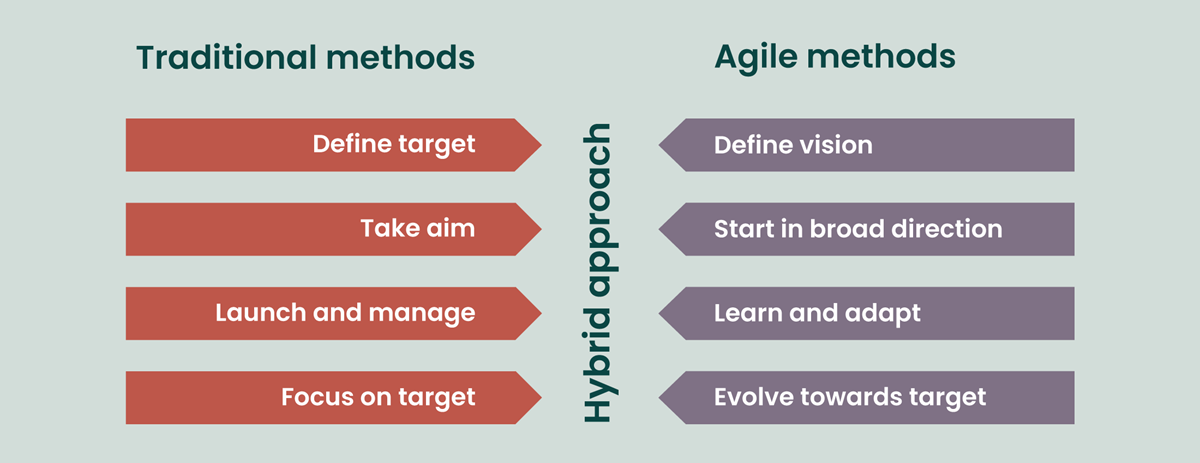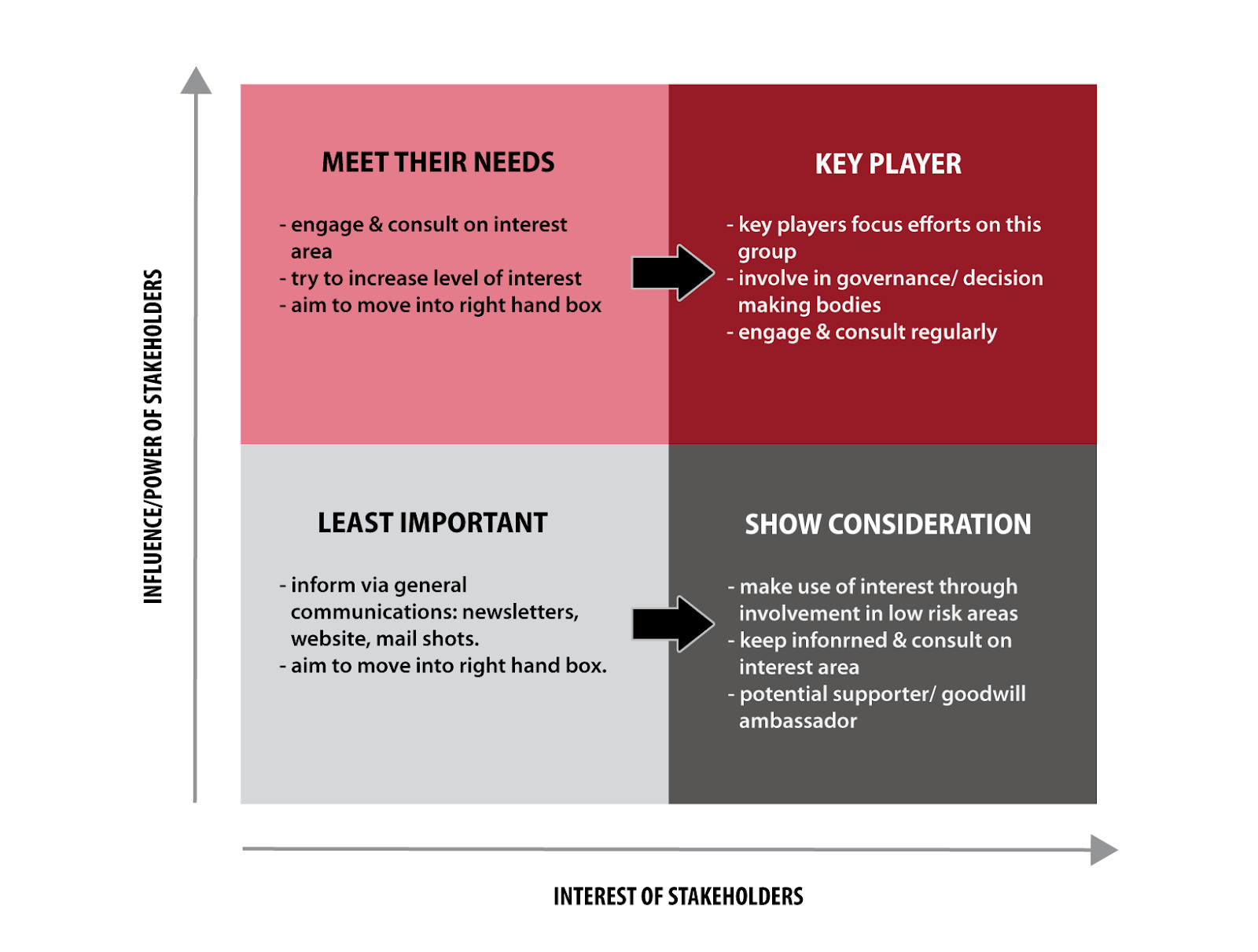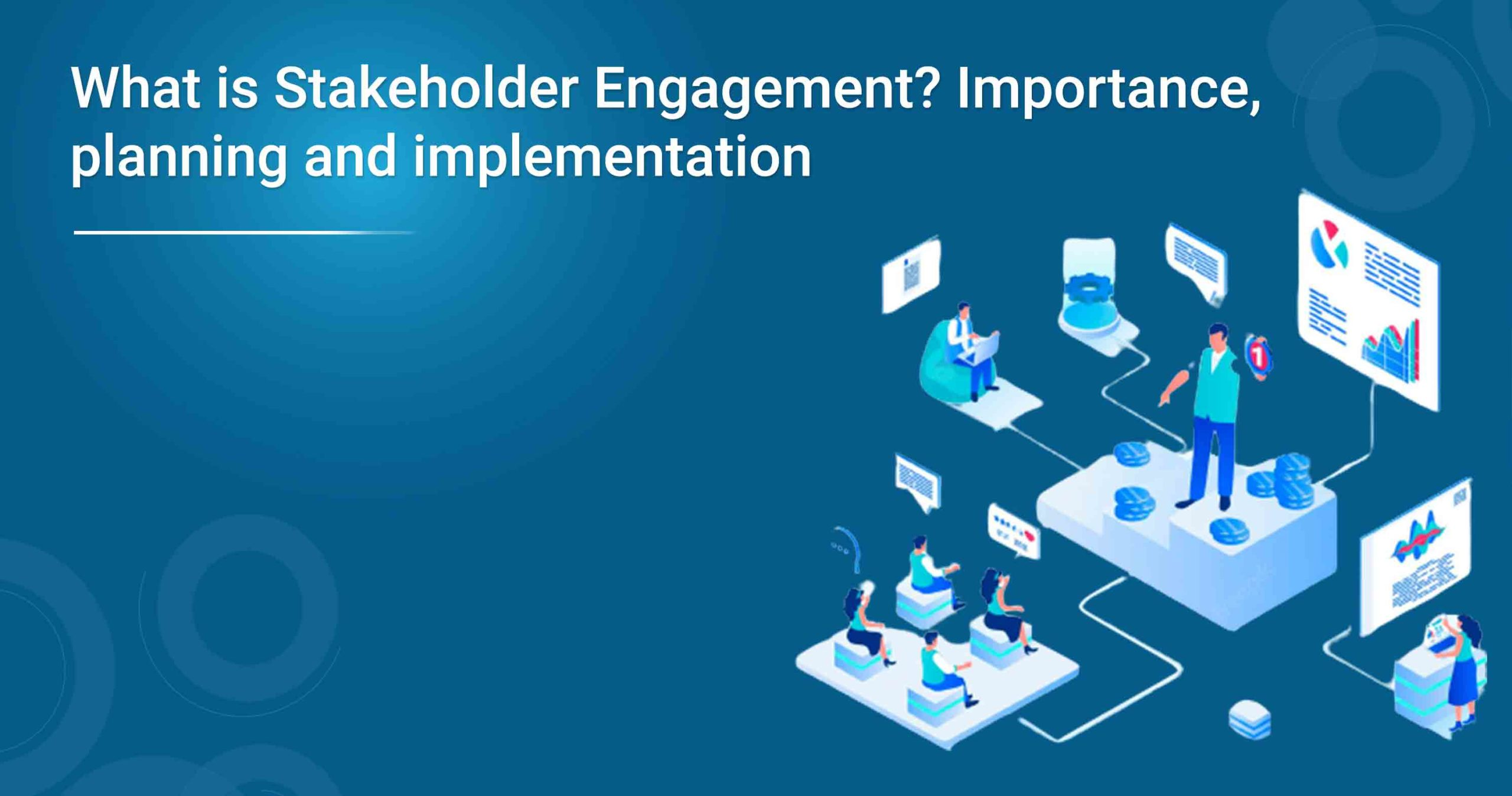In the dynamic world of project management, where the boundaries between teams, departments, and even continents blur, two pillars stand tall: stakeholder management and agile methodology. These two elements intertwine to create a recipe for successful project execution.
In this article, we embark on a journey to explore the synergy between agile methodology and effective stakeholder engagement. Brace yourself for an insightful exploration of how collaboration with key stakeholders within the agile framework can pave the path to project excellence.

Importance of Stakeholder Management in Agile
Imagine embarking on a road trip without a map, navigating through unfamiliar terrains, and hoping to reach your destination accurately. In the realm of project management, stakeholders serve as the map, guiding the project team through the intricate labyrinth of expectations.

Stakeholder management is the compass that ensures the project’s vision and goals are aligned with those who hold a vested interest. It’s more than just a formality; it’s the rudder steering the project away from scope creep and conflicts towards a smooth journey.
In the agile world, where adaptability reigns supreme, stakeholder management gains even more significance. The iterative nature of agile methodologies demands continuous feedback and input from stakeholders.

This feedback loop isn’t a mere protocol; it’s the conduit through which real-world needs and preferences are woven into the fabric of project deliverables. By inviting stakeholders into the heart of the project, agile teams ensure that the end products resonate with real-life users, enhancing the chances of success.
Techniques for Engaging Stakeholders in Agile Projects
Involving key participants holds pivotal importance within Agile initiatives, given their valuable contribution and cooperative efforts profoundly influence the project’s triumph. Presented below are strategies to adeptly engage stakeholders within Agile undertakings:

Encourage Early Involvement
Involving Stakeholders from the Start: Imagine you’re building a sandcastle. Would you wait until it’s almost complete before showing it to others involved? Certainly not. Similarly, involving stakeholders from the project’s inception ensures their perspectives shape the project’s trajectory right from the foundation.
Expectations for Participation: Think of stakeholder involvement as hosting a grand party. Just as you’d set expectations for attire or timing, setting clear expectations for stakeholder participation ensures they are present and engaged throughout the project’s lifecycle.
Requirement Discussions and Planning: Imagine stakeholders as architects of a blueprint. Inviting them to requirement discussions and planning sessions is akin to seeking their expertise in constructing the perfect structure for project success.
Perspective on Product Value: Picture key stakeholders as connoisseurs in a tasting session. By seeking their perspective on the product’s value, you’re ensuring it caters to their unique preferences, making it a satisfying experience for all.

Connect the Dots & Explain Product Benefits
Linking Product Benefits to Stakeholders’ Roles: Imagine stakeholders as characters in a play. By explaining how the product benefits their roles, you’re turning them into protagonists invested in the project’s success.
Demonstrating How Different Departments Benefit: Think of stakeholders as pieces of a puzzle that form the organization’s bigger picture. Showcasing how the product benefits various departments instills a sense of shared purpose and excitement.
Showcasing Broader Impact: Picture stakeholders as adventurers setting off on a quest. Highlighting the broader impact of the product fuels their curiosity and high interest and invites them to be part of something transformative.

Ensure Inclusion in Priority Discussions
Stakeholder Role in Priority Decisions: Imagine stakeholders as advisors at a roundtable. Their insights are invaluable in making informed decisions, ensuring that the project’s path remains aligned with their needs.
Incorporating Stakeholder Input in Decision-Making: Picture stakeholders as co-authors of a story. Their input enriches the narrative, crafting a project that resonates with their desires and preferences.
Direct Communication Between Stakeholders and Product Owner: Think of stakeholders as passengers on a journey. Direct communication between them and the product owner ensures a clear route and minimizes detours.
Leveraging Stakeholder Perspectives for Informed Decisions: Consider stakeholders as lenses through which you view the project. By leveraging their perspectives, you’re gaining a holistic view that guides effective decision-making.

Collaborate During Release Planning
Involving Stakeholders in Release Planning Process: Visualize stakeholders as co-captains on a ship. Their involvement during release planning sets the course and ensures a collaborative voyage toward project success.
Developing Comprehensive Release Plans: Think of release plans as intricate tapestries woven with care. Prioritizing stakeholders ensures that each thread represents their needs and aspirations, creating a harmonious whole.
Addressing Dependencies, Risks, Value Delivery, and Priorities: Imagine stakeholders as navigators in uncharted waters. Involving them addresses potential obstacles, navigates risks, and ensures the value is delivered in sync with their priorities.
Strengthening Engagement through Collaborative Planning: Consider collaborative planning as a symphony. Stakeholder engagement adds unique notes to the composition, harmonizing the project’s rhythm for an impactful performance.

Solicit Feedback During Reviews
Gathering Stakeholder Feedback in Product Reviews: Imagine stakeholder feedback as a treasure chest of insights. Opening it during product reviews reveals valuable gems that refine the project’s facets.
Valuing Stakeholder Opinions and Perspectives: Picture stakeholders as authors of the project’s narrative. Valuing their opinions adds depth to the plot, making the story more compelling and relatable.
Demonstrating Responsiveness to Feedback: Think of feedback as a dialogue between friends. Demonstrating responsiveness to stakeholder input fosters a sense of partnership, assuring them that their voices are acknowledged.
Building Trust and Commitment through Active Engagement: Consider stakeholder engagement as a bridge connecting two shores. Each interaction and response solidifies trust and commitment, fostering a collaborative spirit that propels the project forward.

Benefits of High Stakeholder Management in Agile
Elevated stakeholder coordination within Agile initiatives yields a plethora of merits that significantly bolster project accomplishments and the broader institutional context. The ensuing list highlights pivotal benefits derived from cultivating robust stakeholder management:

Improved Product Quality and User Satisfaction
Picture a culinary contest where stakeholders are the ultimate judges. Just as a chef tailors a dish to suit the judges’ tastes, stakeholder management ensures the end product is not just delightful but meticulously designed to meet their preferences.
This meticulousness doesn’t merely aim for satisfaction; it strives to exceed expectations. Stakeholders’ active involvement from inception to execution guides the project to produce solutions that are not only functional but resonate with users, leading to genuine satisfaction, higher adoption rates, and a loyal user base.

Enhanced Visibility and Transparency in Project Progress
Envision stakeholder management as a crystal-clear window granting an unobstructed view of a skyscraper’s construction. This transparency in project progress is akin to scaffolding, revealing each floor’s completion and structural integrity. Stakeholders gain insight into every development phase, from requirements gathering to sprint execution.
This unfiltered transparency fosters trust, as stakeholders are not left in the dark. It empowers them to make informed decisions, provide timely feedback, and be assured that their interests are a priority throughout the project’s journey.

Reduced Risks through Early Identification and Mitigation
Think of stakeholder management as a vigilant sentinel posted at the entrance of a fortress. Their watchful eyes scan the horizon, spotting potential threats while they’re still dots on the horizon. Early identification and mitigation of risks is a powerful outcome of engaged stakeholders.
Their insights, drawn from their domain expertise, offer a broader perspective that the team might overlook. This foresight becomes a protective shield, allowing the team to address challenges proactively, minimize disruptions, and ensure the project sails through even in challenging waters.

Increased Alignment of Deliverables with Stakeholder Needs
Imagine stakeholder management as a magnetic force that keeps a compass needle unwaveringly pointing north. In the context of project deliverables, this force ensures that every iteration, every feature, and every output gravitate toward meeting stakeholder needs.
By engaging stakeholders throughout the project lifecycle, teams remain aligned with the true north of project objectives. This alignment isn’t just a matter of direction; it’s a pledge to deliver results that resonate with stakeholders, eliminating detours and dead-ends that might arise from a lack of synchronization.
Creating a Comprehensive Stakeholder Management Plan in Agile
Crafting an all-encompassing stakeholder management strategy within Agile encompasses pinpointing, involving, and proficiently conveying information to stakeholders during the project’s lifecycle. Below, we present a systematic roadmap to assist you in formulating this strategy:

Defining a Stakeholder Management Plan for Agile Projects: Picture the stakeholder management plan as an architect’s blueprint for a skyscraper. Like blueprints guide construction, this plan directs structured stakeholder engagement. It’s a compass, defining who, when, and how to engage. Just as blueprints lay the groundwork, this plan ensures collaborative success, where each interaction shapes towering achievements.
Strategic Approach to Stakeholder Engagement in Agile: Envision a garden tended by a dedicated gardener to understand strategic stakeholder engagement. Like nurturing plants, it fosters a diverse stakeholder ecosystem. This approach nurtures connections, fostering a tapestry of collaboration. Expertise in nurturing parallels nurturing stakeholder connections. This yields a thriving agile project landscape abundant with collaboration, innovation, and shared success.
Identifying Stakeholder Needs, Interests, and Impact: View stakeholder engagement as an archaeological dig unearthing artifacts crucial for project success. Like an archaeologist piecing history, stakeholder engagement uncovers insights. Delving into needs, interests, and impact unveils the project’s essence. These insights guide decisions, analyze stakeholders and ensure outcomes align with expectations. This process resembles solving a puzzle where each piece reveals the larger picture.
Setting Effective Communication Methods and Tools: Imagine threads weaving a tapestry of connection within the project. Effective tools and strategies create seamless communication. Threads represent unique interactions, from stand-ups to reports. Intersecting threads form a fabric where every voice weaves into the narrative. This transcends barriers, connecting stakeholders regardless of location.

Roles and Responsibilities Within the Agile Team: Envision an orchestra where each member plays a distinct instrument. Team members fulfill unique roles in stakeholder engagement. The Product Owner leads, ensuring alignment. The Scrum Master facilitates collaboration. Developers integrate feedback. As a conductor unifies the orchestra, the team collaboratively orchestrates engagement, creating a harmonious project.
Collaboration Opportunities and Cross-Functional Teams: Picture mosaic pieces forming a whole. Cross-functional teams are like tiles contributing expertise to stakeholder engagement. The synergy between functions creates a dynamic environment. Collaboration opportunities are spaces where tiles fit, forming a pattern. As tiles complement, cross-functional teams collaborate for a comprehensive engagement strategy.
Capturing, Tracking, Reporting, and Disseminating Results: View results as footprints left during an expedition. Capturing these footprints preserves lessons, insights, and milestones. Tracking maintains transparency. Reporting chronicles the narrative. Dissemination shares this diary, ensuring experiences are shared. The journey becomes a collective endeavor, with every stakeholder being part of the legacy.

Conclusion
Recapitulating the key techniques as vital tools within a craftsman’s toolbox, envisioning their amalgamation into a refined artistry that leads the path to project triumph. Strengthening the imperative role of continuous communication in agile as an ever-flowing river coursing through the project landscape, nurturing every facet to flourish in vibrant growth.
Propelling readers with an encouraging beacon to venture into the realm of agile transformation and stakeholder collaboration, beckoning them to chart the unexplored waters and unveil untapped vistas of achievement. These contemplations culminate as the conclusive brushstrokes upon a canvas, the finishing touch that shapes the masterpiece of stakeholder engagement, etching an enduring impression of achievement and communal success.
As we traverse this collaborative odyssey, where stakeholders interlace with agile methodologies, the orchestral symphony of project management takes the central stage. Embracing the conductor’s baton of stakeholder engagement, project managers and teams compose a harmonious symphony resonating with excellence.
As we bid farewell to this voyage of exploration, let’s embark on our own unique journey of stakeholder collaboration within the fertile expanse of the agile landscape, weaving a narrative of triumph that resonates with each endeavor.
FAQs
How Agile collaboration should be used for collaboration?
Agile collaboration is a dynamic approach that fosters open communication, iterative feedback, and shared ownership. It should be harnessed as a framework where team members engage in continuous exchanges, valuing diverse viewpoints.
Regular stand-up meetings, sprint planning sessions, and retrospectives create avenues for collaborative discussions. The iterative nature of Agile encourages teams to adapt and improve through collective insights, ensuring that collaboration is integral to every project phase.
How do you effectively collaborate with stakeholders?
Effective collaboration with stakeholders entails proactive engagement and active listening. It involves initiating dialogue early in the project to align visions and expectations. Regular updates through demos, reviews, and reporting provide transparency.
Gathering feedback, acknowledging concerns, and integrating valuable insights into project iterations build trust. Collaboration tools facilitate real-time interactions, bridging geographical gaps. By maintaining an open channel, understanding stakeholder needs, and demonstrating responsiveness, teams ensure a collaborative ecosystem that yields successful outcomes.
How should a team interact with stakeholders in an Agile environment?
In an Agile environment, the team’s interaction with stakeholders should be continuous, adaptive, and inclusive. Regular communication through various ceremonies like sprint planning, daily stand-ups, and sprint reviews allows stakeholders to stay informed and provide input.
Welcoming stakeholders to reviews and demos encourages their engagement. Addressing feedback promptly ensures alignment with expectations. Having to engage stakeholders in decision-making, prioritization, and release planning leads to enhanced collaboration. Agile teams should maintain a flexible approach, valuing stakeholder input throughout the project lifecycle.
Who is responsible for collaboration with stakeholders in Agile?
Collaboration with stakeholders in Agile is a shared responsibility across the entire project team. The Product Owner plays a central role in maintaining communication and aligning priorities. The Scrum Master facilitates collaboration by ensuring ceremonies run smoothly and removing impediments.
Development team members engage stakeholders during requirement discussions, feedback loops, and reviews. However, the entire team collectively owns stakeholder collaboration, fostering an environment where everyone values input, adapts to feedback, and works collectively towards project success.



